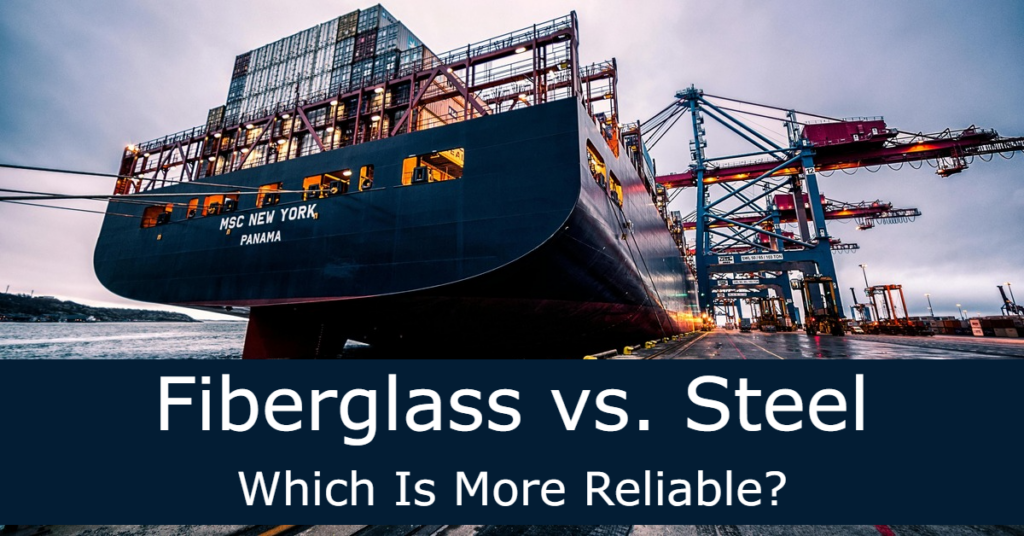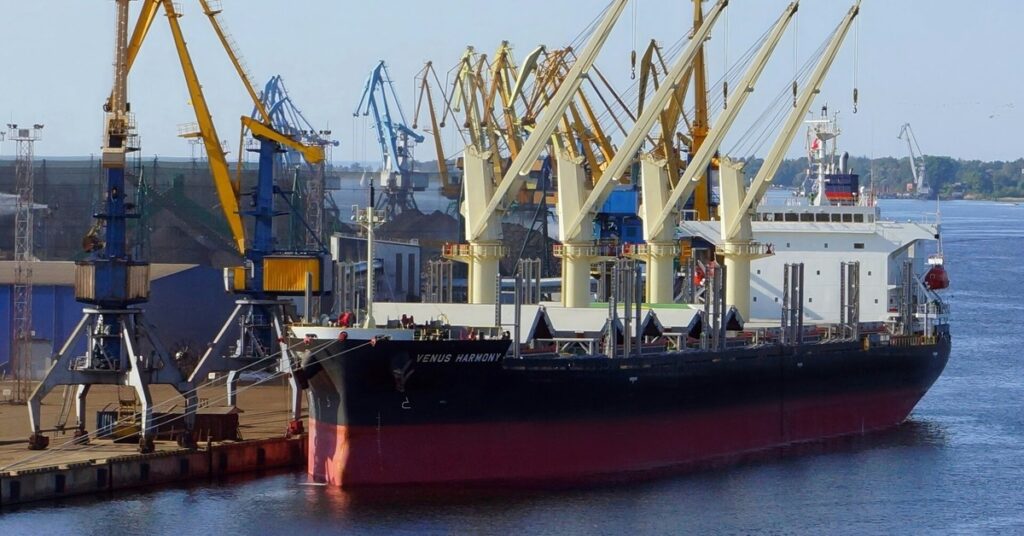Boats travel hundreds upon thousands of miles at sea, so reliability is crucial for short- and long-term use. A vessel’s durability starts with its composition, typically including steel or fiberglass. While other materials are used in the industry, these two choices are the most popular for the maritime sector. Shipping professionals should get the most from their investment, so which is more reliable: steel or fiberglass? Here’s how to determine the better option.

Fiberglass vs. Steel: Reviewing Reliability
Reliability is a chief concern for maritime professionals when deciding whether they want steel or fiberglass boats. Here are six factors to consider when making this decision.
Durability
A company or private user should expect its boat to last for a few decades, as this expense requires significant capital investment. Maritime professionals should expect a few things regarding the durability of fiberglass and steel boats.
Steel is typically the better choice for strength, depending on what kind is necessary. For instance, stainless steel has excellent tensile strength, helping it support heavier weights without fracturing. Boat owners also get better collision resistance with steel if they encounter glaciers, rocks or other obstacles. Modern vessels utilize carbon steel because of their thickness and low-cost repairs.
While not as strong as steel, fiberglass punches above its weight in terms of strength. Fiberglass is notably a lighter material than steel, but its strength is commendable for its average weight. Some choose the material for fuel efficiency and overall performance, but fiberglass boasts strength through the binding resin. This quality enables fiberglass to remain intact and spreads the stress around to prevent breaking.
Corrosion
Constant aquatic travel means rust is a significant concern for the shipping industry. Saltwater provides a ripe environment for corrosion because boats encounter faster-moving electrons — thus, the rusting process can occur more quickly. This concern is heavy for ships in the ocean because rust forms when oxygen and water react with iron, emphasizing the need for strong materials in boat construction.
Steel can be a liability for boats because it contains iron. Professionals can upgrade to stainless steel, but this material remains vulnerable to rust when it encounters chemicals and moisture on long trips. Stainless steel contains a minimum of 10.5% chromium to defend against rust, but it’s not foolproof. This strategy may work in freshwater environments where corrosion is less concerning. Some maritime companies use Corten steel because its layer of rust protects the boat instead of deteriorating it.
Fiberglass is less susceptible to corrosion because of the absence of iron. This material is more reliable if the boat operator wants to avoid rust, considering they won’t see any here. Fiberglass uses glass and resin, thus the necessary components for corrosion aren’t there.
Maintenance
There’s less to worry about regarding corrosion, so fiberglass ships typically require less maintenance than steel boats. The most pressing task is caring for the surface, which generally contains gelcoat. Crews must apply polish to the fiberglass boat hull to improve the ship’s appearance and prevent severe damage.
Another critical task for fiberglass boats is repairing chips in the hull. These nicks can lead to severe damage through flooding if not tended to, so operators must apply gelcoat for repairs. Fiberglass ships also need regular cleanings and waxings to ensure longevity. The primary concern is osmosis because gelcoat is semipermeable, so inspections should watch for various cracks and blisters on the hull.
Steel boats require more maintenance and can be a hassle for owners. This material needs constant upkeep and inspections to prevent corrosion because even small areas of rust can lead to compromised infrastructure. Maintaining a steel boat isn’t necessarily difficult — it requires attention to detail and maintenance schedules. Additionally, the crew must pay attention to screws and joints, as their quality will go a long way in preventing corrosion.
Safety
Steel ships are generally safer than fiberglass because they can better absorb contact with rocks, glaciers and other ocean obstacles. Fiberglass vessels are more vulnerable to punctures and cracks when collisions happen, making them a liability for maritime professionals seeking high safety marks. A 2020 IOP Conference Series study says fiberglass boats can sink even with small leaks because their buoyancy is poor, making steel the better choice.
Another safety consideration for boating professionals is flammability. Steel excels in this category because its extremely high melting point — about 2,700 degrees F — makes it practically noncombustible. Fires rarely reach this temperature, so they’re less risky on steel boats. Conversely, fiberglass is more vulnerable to fires due to the flammability of polyester resin, thus leading to toxic fumes if accidents occur.
Industry professionals should also be aware of each material’s effects on humans. Fiberglass can be dangerous, as boat occupants may inhale it and trap fibers in their airways. Experts say inhaling fiberglass may leave it stuck in the lungs or thoracic areas of the body and irritate those with sensitivities. For example, people with asthma or bronchitis should be wary before stepping on a fiberglass boat.
While it has disadvantages, fiberglass has some safety elements going its way. For instance, there is less concern about corrosion, leading to more peace of mind and reduced maintenance. Fiberglass ships are also lighter and easier to move if emergencies arise, leading to quicker getaways from rough waters and bad weather conditions. This advantage has a drawback, as fiberglass vessels are more vulnerable to the wind.
Speed
Cargo ships can travel between 8 and 20 knots, depending on their type. The material used in the boat will go a long way in determining the acceleration and top speed, with the better option coming down to preferences and needs.
Speed and weight directly correlate in fiberglass vs. steel boats because the latter is heavier and thus slower. The slower speeds could be a liability for those with tight schedules or operators who want to travel faster. A more efficient trip calls for a fiberglass ship because it’s lighter and more flexible in design. Manufacturing a fiberglass boat allows for the hull to be sleeker, thus reducing drag and increasing top speed.
Insulation
Insulation is critical for the crew’s comfort on long trips. It helps the interior maintain comfortable temperatures, whether there is a warm or cold climate outside.
Insulation should be considered when picking a fiberglass or steel door. Both materials are solid insulators, with the Department of Energy (DoE) saying most of these doors have an R-value of 5 or 6, beating out their wood competitors. While both provide comfort, fiberglass allows for slower heat transfers and easier air trapping to create cozier rooms.
On the other hand, steel can be a liability for insulation because it’s a poor heat conductor. Heat will more easily transfer inside and outside the boat, leading to uncomfortable rooms. Ship manufacturers must equip steel vessels with robust insulation measures or they could become vulnerable to hull condensation. Poor insulation leads to worsened interiors and less comfortable crews.

Other Considerations for Steel and Fiberglass Boats
Some factors might not directly affect the fiberglass vs. steel debate regarding their reliability. However, these considerations are still essential for boating and shipping professionals when deciding between fiberglass and steel vessels.
Environmental Effects
Experts say the shipping industry accounts for 3% of worldwide emissions, putting it on par with air travel. Ship manufacturers are making improvements, but it’s worth considering steel and fiberglass vessels and how they impact the planet.
For instance, professionals should consider recyclability when reviewing the two materials. Recycling steel from old boats reduces greenhouse gas emissions, preserves natural resources and lowers the energy consumed for shipbuilding. This makes steel more reliable for the maritime industry as a whole because fiberglass cannot say the same. Recycling is more difficult with fiberglass because expensive equipment and specialized techniques are necessary.
Standard glass is recyclable, but fiberglass is more complicated because it’s a composite material. Breaking it down requires undoing the strong chemical bonds that keep them together, so recycling centers must dedicate extra time, money and resources to this process.
Shipping professionals must also consider the environmental effects of producing fiberglass and steel boats. These processes impact their reliability and long-term sustainability as the maritime industry looks for better practices. For example, steel is an energy-intensive metal to produce and requires a lot of emissions. Fiberglass production is better for the environment because its primary components are sand, sodium carbonate and limestone.
Price Tag
For many companies, the fiberglass vs. steel debate could come down to price tag.
Steel is typically the more expensive option for ships because it’s heavier and requires more resources in production. Additionally, boat owners should consider the long-term maintenance costs, as steel vessels will likely bring steeper expenses over the years. Waxing, cleaning and rust alone make these ships more expensive and time-consuming. Steel can also be volatile in price, making costs less reliable for buyers.
Conversely, fiberglass ships are typically less expensive because manufacturers have a more manageable time producing them. Fiberglass boats provide flexibility with the hull, letting the client determine what shape they want. These ships also have fewer maintenance requirements if the crew keeps up with the gelcoat surface. Owners must also consider fuel, storage and insurance costs because they significantly affect the price.
Frequently Asked Questions
How long will a fiberglass boat last?
Fiberglass boats will last as long as their owners elect to preserve their good conditions. These ships need regular inspections, proper storage and cleanings to cover damage and minimize wear. With adequate care, fiberglass boats last for decades and remain reliable over their life spans.
Do fiberglass boats rot?
Fiberglass vessels boast better durability than wood boats because they have a reduced risk of rotting. However, they are at risk for damage. Fiberglass is susceptible to cracks from sun exposure, often requiring exterior gelcoats for safeguarding.
What is the strongest material for a boat?
Carbon fiber is arguably the strongest material for a boat, with the industrial version boasting 20% better durability than fiberglass. Additionally, carbon fiber’s strength-to-weight ratio nearly doubles that of fiberglass.
How do steel and fiberglass compare to aluminum?
Aluminum boasts superiority regarding its weight and affordability, with lower marks in each category. Plus, this material is less susceptible than steel to corrosion. However, aluminum’s weight can be a liability in bumpy waters, making it less stable and problematic for maritime professionals.
- The 15 Most Exciting New Ships of 2025 – January 6, 2025
- How Old Do You Have to Be to Drive a Boat? – November 12, 2024
- The Engineering Behind Ice-Class Vessels – September 20, 2024



